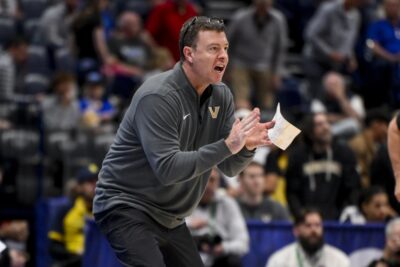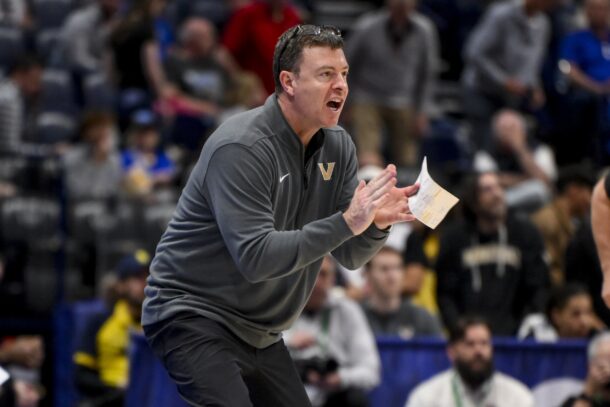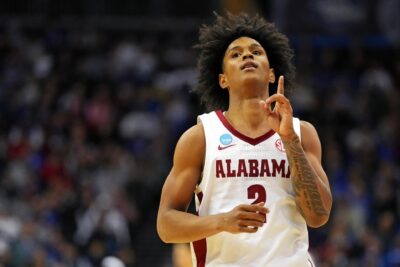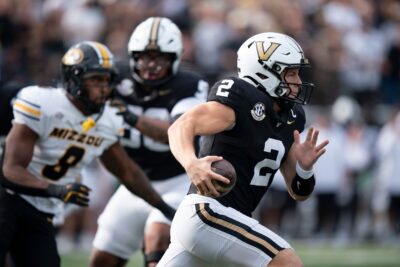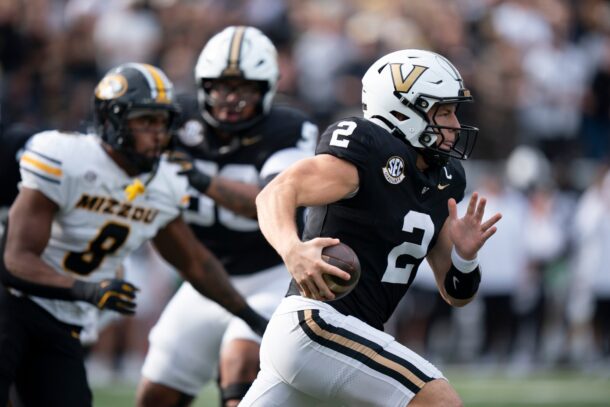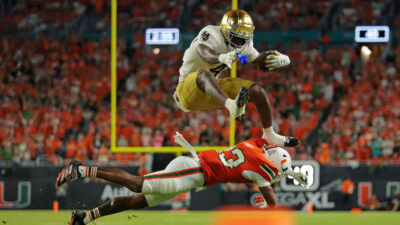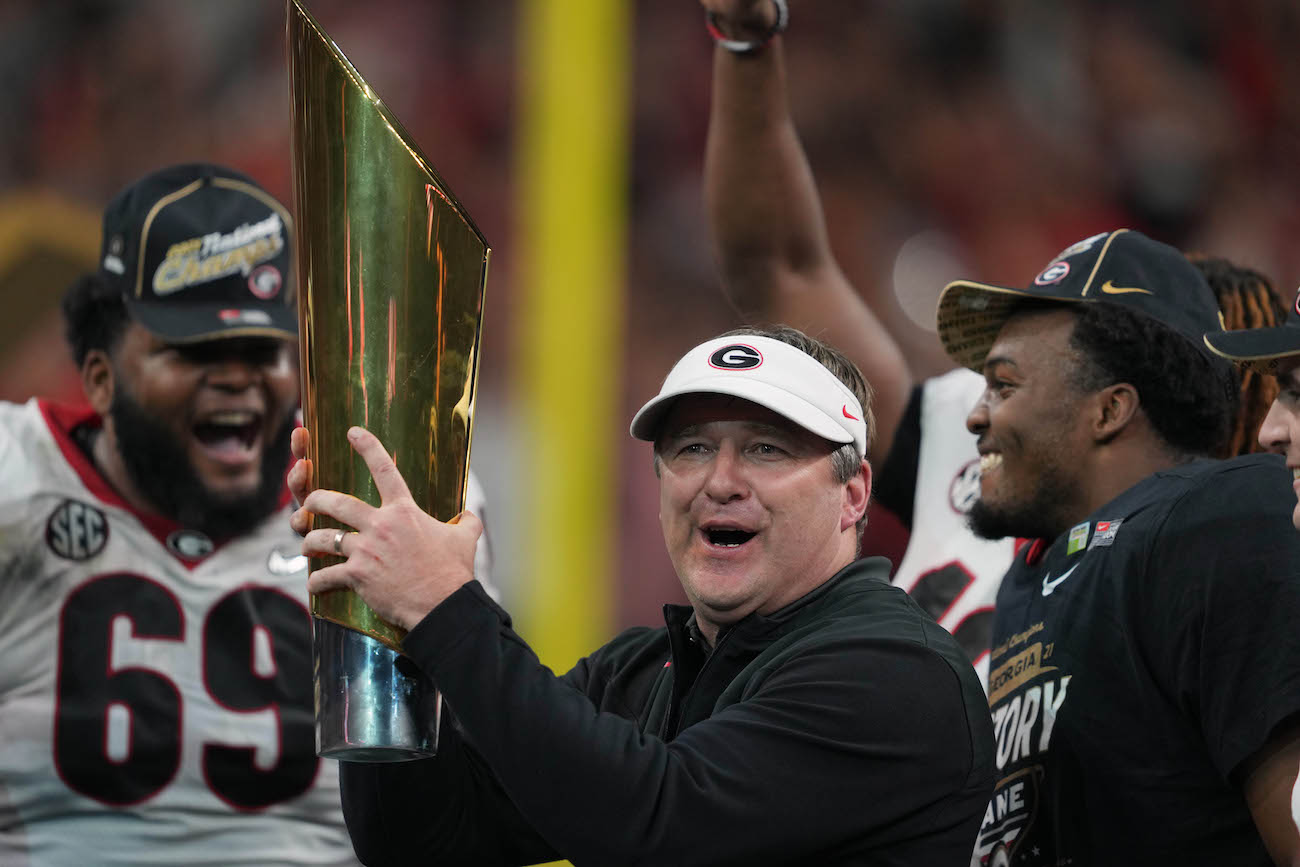
Extra Points: College football fans are tuning out the Playoff. There’s a simple solution
By Matt Hayes
Published:
The numbers are out, and they’re about as appealing as another meeting of bickering college football commissioners doing their best to ignore cashing a $600 million a year paycheck.
College football’s showcase game is falling flat with television viewers – the very metric that fills athletic department coffers and could potentially overflow them to ridiculous levels if the sport’s 10 commissioners could unanimously agree on a format for an expanded Playoff.
Unanimous hasn’t come easy, and after this week’s failed attempt to find a solution, only something as shocking as a second straight season of disappointing television numbers could push this dysfunctional mess across a finish line.
“If this doesn’t rattle some cages, I don’t know what will,” an industry source told me this week. “The (expanded) Playoff has to get done for the health of the game. This is no longer about egos.”
Georgia’s win over Alabama Monday for the national title – one of the most entertaining College Football Playoff National Championship Games, but a regional matchup of SEC teams – was the second-lowest watched title game in the history of the Playoff.
The game averaged 22.6 million viewers and was ahead of only last year’s championship game between Alabama and Ohio State – which drew 18.7 million at the end of a taxing pandemic season.
One is an anomaly, two is a trend.
“We can’t afford to see what three is,” a Pac-12 athletic director told me. “You string together three straight bad numbers, and you run the risk of selling a declining product. Right now, you can attribute it to the pandemic. But how long can we use that crutch?”
The bigger question: How much longer can each of the Power 5 conferences continue the public display of who has the sharpest sword — when it’s clear who does.
The SEC doesn’t need any change in the structure of the Playoff. It is dominating the postseason and set to make more money than any other conference when its new ESPN deal begins in 2 years.
The SEC will stay at 4 teams, go to 8 teams (all at-large selections) or go all the way to 12 teams (6 highest-ranked conference champions as automatic qualifiers, 6 at-large).
Then there’s every other A5 conference, each with its own unique set of demands that can scuttle expansion and leave at least $600 million annually on the table. It’s comical, really.
— The Big Ten has somehow convinced its two Alliance partners – the Pac-12 and ACC – that’s it’s a poor pauper chasing the mean SEC, just like them. The Big Ten makes more television money than any other conference and wants a Playoff expansion that consists of A5 conference champion guarantees.
This, of course, is nonsensical because it exposes universities to potential antitrust collusion lawsuits from, say, a Group of 5 conference (because everyone who has ever sued big-time college sports has won).
— The ACC, which without Clemson may as well be the defunct Big East, wants – are you ready for this? – an 8-team format with automatic A5 qualifiers. It claims wear and tear on college athletes is the reason (a legitimate question), but the reality is it’s a power play on Notre Dame.
The fewer at-large spots in any Playoff format, the less chance for Notre Dame to reach the Playoff. Translation: Join the ACC, our champion gets an automatic spot!
— The Pac-12 and Big 12 are open to everything because the Pac-12 and Big 12 are smart and desperate. There’s something to be said for knowing your place in the room.
— The Group of 5 conferences will go along with whatever the Power 5 conferences decide because the option is to go along or watch them break off and form their own Playoff. Again, knowing your place in the room.
So while the P5 commissioners discuss these and a few other issues that can easily be fixed (see: Rose Bowl as a permanent semifinal on New Year’s Day), they’re ignoring the oncoming train.
They can’t afford another season of bad television numbers. They can’t afford to not figure out their differences over the next month (the 12-team format is the smartest move), and potentially lose hundreds of millions in television dollars with that mistake.
A deliberate process
Don’t be confused about zero momentum in Jim Harbaugh’s potential move to the NFL. There’s more at play than a simple hire.
“He’s not doing anything before he knows who’s running the show at some of these jobs,” an NFL source told me. “He’s been down that road before.”
Harbaugh’s wildly successful first stint as an NFL coach – 3 conference championship games, and a Super Bowl appearance in 4 seasons – ended when he and San Francisco 49ers general manager Trent Baalke couldn’t get along.
That won’t happen again. Harbaugh, another NFL source told me, “isn’t leaving Michigan unless he has the perfect job” in the NFL.
Chicago is a prime candidate for Harbaugh, and the Bears are in the process of interviewing for their GM and head coaching positions.
The Raiders are another possibility, but they’re in the playoffs this weekend – and a win could secure both interim coach Rich Bisaccia and GM Mike Mayock.
The Giants and Vikings are looking for a new coach and GM.
While all of this leads to the uncertainty with Harbaugh, it also benefits Michigan, giving the university more time to come up with a unique contract extension that could convince Harbaugh to stay in Ann Arbor.
Elite edge for 2022
The emergence of OLB Dallas Turner has completely changed the dynamic on the Alabama defense and already has led to personnel moves that will impact the 2022 season.
A 5-star freshman, Turner struggled early in the season to get on the field for more than a handful of backup plays. It took 2 months before it all started connecting in the month of November – culminating with his best game of the season in the loss to Georgia in the national championship game.
In the last 7 games of the season, Turner played like a mega-recruit, getting 8.5 sacks in a stretch of critical SEC and Playoff games. By the national championship game, he was a legitimate threat off the edge – one that will make life easier for All-American OLB Will Anderson next season.
It’s a numbers game: you can’t double team, or chip with a tight end and/or running back, on both rush ends. Anderson and Turner will both get 1-on-1 opportunities during games.
Turner’s emergence also contributed to another 5-star DE/OLB, Drew Sanders, leaving for the transfer portal.
“(Turner) stood out, no question. The quick burst off the edge was impressive,” an NFL scout told me. “He has work to do, but he’s young. He’s not going to win off the edge every time, so you’ve got to find a way to use your hands and leverage to get inside. That’s what separates Anderson from everyone else in college football.”
Sanders, a Dallas native, is being targeted by Texas coach and former Alabama assistant Steve Sarkisian.
Building and moving
Lincoln Riley is a player away from significantly changing the USC roster in about 6 weeks.
The transformation hasn’t been lost on Pac-12 coaches.
“He got 4 elite (freshmen) who play Day 1. That’s how you win games,” a Pac-12 coach told me. “We can all think we’ll just X and O you to death, but guys on the field win games. Once (Riley) gets his quarterback, you’ll see a different team.”
That quarterback, more than likely, will be Oklahoma freshman All-American Caleb Williams. While he’s technically in the transfer portal, it would be a shock if Williams – who said earlier this year that he would’ve played for Riley at OU if he had to walk on – doesn’t sign with USC.
Williams is a legitimate Heisman Trophy candidate at the most important position on the field. Then there’s freshmen signees TB Raleek Brown and WR CJ Williams, who both are expected to make immediate impacts.
The defense gets a quick upgrade with CB Domani Jackson, the No. 7 overall player in the 2022 class according to the 247Sports composite, and S Zion Branch, the No. 47 overall prospect.
“We recruited CJ, and I’ve watched him for 2 years running now,” another Pac-12 coach told me. “That’s a grown man right there. He’s going to be a problem for everyone in this league.”
Riley still needs interior linemen – on both sides of the ball – from the transfer portal in the short term. The most important time at USC could come between now and the end of spring practice, when players make final decisions about where they want to play for the 2022 season.
Matt Hayes is a national college football writer for Saturday Down South. You can hear him daily from 12-3 p.m. on 1010XL in Jacksonville. Follow on Twitter @MattHayesCFB


